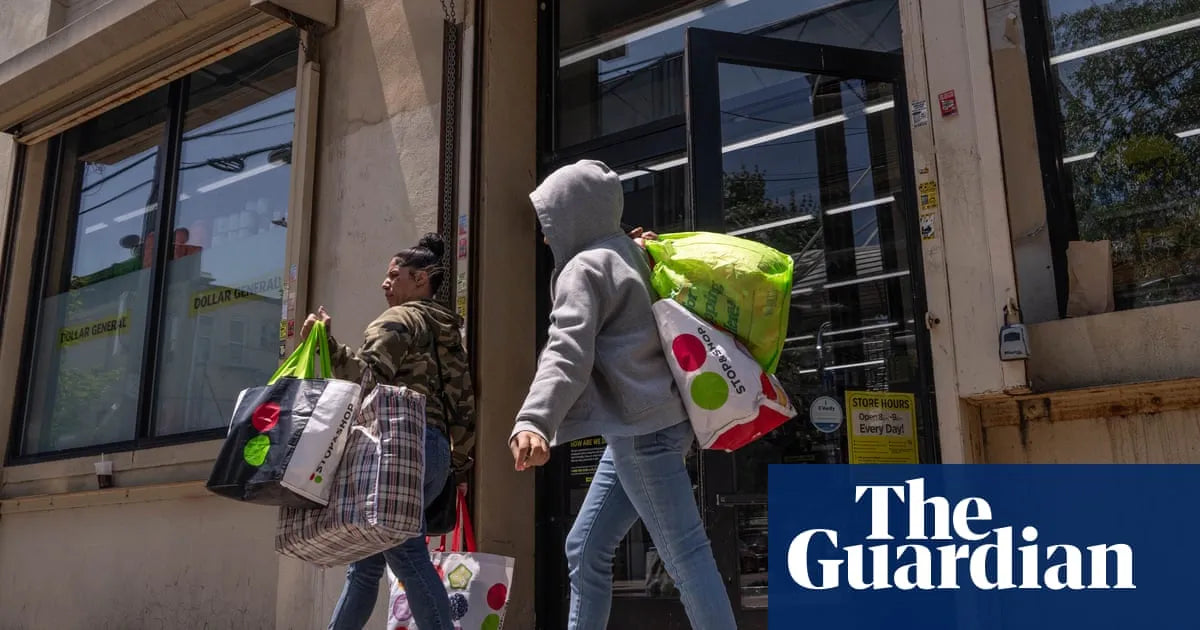
Rising Prices and Retail Challenges: The Impact of Tariffs on Department Stores
Table of Contents
- Key Highlights
- Introduction
- The Price Hike Dilemma
- Retailers' Strategies Amidst Tariff Uncertainty
- The Shift in Consumer Behavior
- The Role of Tariffs in Retail Pricing
- Consumer Sentiment and Retail Outlook
- Conclusion
- FAQ
Key Highlights
- Prices for apparel and footwear have notably increased, with footwear rising by 4% and apparel by nearly 2% from January to June.
- The Trump administration's ongoing trade negotiations could introduce new tariffs as high as 40% on various imported goods, further straining retail prices.
- Retailers are grappling with the challenge of passing increased costs onto consumers while maintaining customer loyalty amidst growing competition from online shopping.
Introduction
As shoppers navigate the bustling aisles of Queens’ largest mall on a scorching July day, the heat isn't just coming from the sun. Instead, it emanates from the palpable frustration of rising prices. The reality of inflation, exacerbated by ongoing trade wars and tariff negotiations, has begun to reshape the retail landscape in the United States. Department stores, once a cornerstone of American shopping culture, are now confronting a perfect storm of economic pressures that threaten their viability.
Customers like Clarence Johnson and Nydia Olvera voice their concerns about the escalating costs of everyday essentials such as t-shirts and footwear, highlighting a broader trend affecting consumers nationwide. The implications of these price hikes ripple through the economy, affecting not just the retail sector but also the purchasing power of consumers. This article delves into the current state of department stores, the influence of tariffs, and the strategies retailers are employing to navigate these challenges.
The Price Hike Dilemma
In recent months, shoppers have reported noticeable increases in prices across various categories, particularly footwear and apparel. According to a study by DataWeave, the prices for these goods surged significantly between January and June, with footwear prices rising by up to 4% and apparel by nearly 2%. For many, this has become a frustrating reality as they witness their purchasing power diminish.
The predicament is compounded by the Trump administration's ongoing trade wars, which have led to uncertainty surrounding tariff implications. With ongoing negotiations involving a multitude of countries, retailers must brace for potential tariffs as high as 40% on imported goods. This looming threat creates a chaotic environment for pricing strategies, forcing department stores to make critical decisions about how much of the increased costs they can pass onto consumers.
Retailers' Strategies Amidst Tariff Uncertainty
As retailers grapple with rising costs, they face a dual challenge: managing consumer expectations while maintaining profitability. Macy's, for instance, recently adjusted its earnings forecast, citing the uncertainty surrounding tariffs as a significant factor. The company's stock price has already seen a notable decline, dropping 25% this year alone.
Macy's CEO, Tony Spring, has acknowledged that while some prices may remain stable, others will inevitably rise. This sentiment echoes across the retail industry, with executives from major companies like Nike, Target, Best Buy, and Walmart indicating their need to pass on increased costs to consumers. However, the challenge lies in finding the right balance. If retailers raise prices too steeply, they risk alienating loyal customers who have increasingly turned to online shopping for better deals.
The Shift in Consumer Behavior
The rise of online shopping has significantly altered consumer behavior, leading to a decline in foot traffic at department stores. In 2023, sales at department stores accounted for just 2.6% of total retail sales, a stark contrast to 14.1% in 1993. This shift highlights the competitive landscape retailers must navigate as they vie for consumer attention and dollars.
At Queens Center, some Macy's shoppers report that they have yet to notice any significant price increases, especially when utilizing coupons. Raphaelina Garcia, for example, expressed that using coupons allows her to maintain her usual spending habits, making prices feel more stable despite the broader increase. This indicates that while some consumers may be sensitive to price changes, others may remain loyal if they perceive value through discounts and promotions.
The Role of Tariffs in Retail Pricing
The tariffs imposed by the Trump administration have had a pronounced impact on retail prices. The recent deal with Vietnam, which allows exports to face 20% tariffs instead of the initially proposed 46%, is a response to the pressing need for balanced trade relations. Nevertheless, goods manufactured in other countries, particularly China, that are shipped from Vietnam will still face a striking 40% tariff.
This trade landscape leaves retailers in a precarious position, where they must not only absorb some costs but also make strategic decisions about which price increases can be passed onto consumers. Macy's Chief Financial Officer, Adrian Mitchell, noted that while the company has been able to gain some vendor discounts, they are also absorbing a portion of the increased costs, illustrating the fine line retailers must walk.
Consumer Sentiment and Retail Outlook
As consumers become increasingly aware of the economic pressures stemming from tariffs and inflation, their shopping habits may shift in response. Retailers must remain attuned to these changes, adapting their marketing strategies to emphasize value, quality, and customer service.
The challenge ahead for department stores lies not only in managing prices but also in re-engaging a consumer base that has increasingly turned to online alternatives. As competitors continue to innovate and enhance their online shopping experiences, traditional retailers must find ways to blend the in-store experience with the conveniences offered by e-commerce.
Conclusion
The challenges facing department stores are emblematic of broader economic trends influenced by trade policies, consumer behavior, and market competition. As rising prices continue to impact consumers, retailers must navigate a landscape fraught with uncertainty while striving to maintain their customer base.
With ongoing negotiations around tariffs and trade agreements, the retail sector stands at a crossroads. Retailers that can effectively manage costs, adapt to consumer preferences, and innovate their shopping experiences will be better poised to thrive in this changing landscape. The coming months will be critical as the retail industry responds to these pressures, shaping the future of shopping in America.
FAQ
What factors are contributing to rising prices in department stores?
Rising prices in department stores are primarily driven by increased tariffs on imported goods, ongoing trade wars, and inflationary pressures affecting production costs.
How have tariffs affected the retail sector?
Tariffs have significantly raised the cost of imported goods, forcing retailers to either absorb the costs or increase prices for consumers, which can lead to decreased sales and customer loyalty.
What strategies are retailers using to cope with price increases?
Retailers are employing various strategies, including adjusting their pricing structures, utilizing discounts and coupons, and absorbing some of the increased costs to maintain customer loyalty.
How has online shopping impacted department stores?
The rise of online shopping has led to a decline in foot traffic and sales for department stores, prompting many retailers to enhance their in-store experiences and compete on pricing and convenience with e-commerce platforms.
What are the prospects for department stores in the face of rising prices?
The future of department stores will depend on their ability to adapt to changing consumer behavior, manage pricing effectively, and innovate their shopping experiences to attract and retain customers.
Power your ecommerce with our weekly insights and updates!
Håll dig uppdaterad om vad som händer i handelsvärlden
E-postadress





